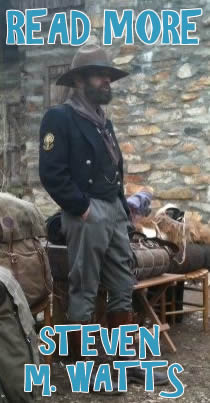by Dayton
Pushing my ten year old uncle to spend even an hour outside is an ordeal. He clings to the computer like a security blanket, only it cannot be carried around from place to place. Instead, he remains with it, basking in the blue artificial light, a poor substitute for the sun.
Over a third of children and teenagers are overweight or obese, and part of the problem is that they’re not spending enough time outside. Kids today spend half as much time outside as they did 20 years ago. While these figures are concerning, they’re nothing new. We’ve known this for years, but the temptation of technology is too strong for the younger generation. But there is a way to merge tech with the outdoors- geocaching.
What is it?
Geocaching is a massive treasure hunt where participants use GPS units to find caches, which can contain anything from disposable cameras to old coins, but always a logbook for anyone who finds it to write down their name. It’s about finding something hidden, even if it’s not monetarily valuable, which is something that even kids can understand. Although there are geocachers of all ages, it’s a great way to get kids to spend time outside, as has been previously noted on Master Woodsman.
How To
Even though geocaching is incredibly simple to get into, there are a few steps that you should take into consideration.
 Get a GPS Receiver or Smartphone. This shouldn’t be too complicated, since most people already have a smartphone. GPS receivers can be expensive by themselves, so it might be worth it to trade in your flip phone for something a little more high-tech.
Get a GPS Receiver or Smartphone. This shouldn’t be too complicated, since most people already have a smartphone. GPS receivers can be expensive by themselves, so it might be worth it to trade in your flip phone for something a little more high-tech.
- Find a Cache in the Area. The most popular site is geocaching.com, but there are a few others scattered about. I like to find ones around my favorite campsites, but there are several in urban areas as well. Also, take note of the difficulty rating. If you’re just starting out, or if you are with children, then pick something easier to find.

- Be Prepared. This is going to vary based on the area that you are searching in, so make sure to do some research before leaving. Be conscious of weather conditions. If it’s hot and sunny, be sure to bring sunscreen, but keep on longer socks or jeans to protect from bramble scratches- searching for a cache can take you off trail. If ticks are a problem in your area, take the necessary precautions.
On the other hand, if it’s cold where you are, make sure to wear plenty of layers. While geocaching can be physically strenuous, don’t count on that to keep you warm. You’ll be walking for long periods of time and searching through piles of cold rocks, bark, hollow trees, etc, so it’s important to wear gloves. Invest in some thick socks or insulated shoes.
Regardless of weather, you should also bring some drinking water, a small trinket to trade in the cache, and wear shoes with plenty of ankle support. In addition, have a map of the area. Caches are not always hidden in the most accessible places, and a map will help you navigate alternate routes better than a GPS.
- Search for the Cache. Looking for a cache can take a lot of time, depending on the difficulty rating and location that you’ve chosen. GPS will only be able to tell you an approximate location. Once you get within 30 feet, start investigating the area and access possible hiding spots. Caches come in a variety of shapes and sizes, so be on the lookout for all sorts of containers.
- Open the Cache. Open your treasure and take stock of the cache. Feel free to take one of the trinkets and replace it with one of your own. If you do, don’t take the five dollar bill and leave a single Mento. Be reasonable with your exchange. The only thing you must do is sign your name in the logbook provided.

- Put it Back. Return the cache to the exact location you found it. Other geocachers will need be searching for it with the corresponding difficulty rating in mind, so don’t make it harder to find than it initially was.
- Log Your Find. This is a nice gesture to do for your fellow geocachers. It lets them know that their cache is being appreciated and encourages others to attempt to find the same one. Also, after you’ve been doing this for a while, you’ll want to take credit for every one.
Honestly, geocaching was not my first thought when brainstorming how to get my uncle away from his computer. Eventually, I had to concede that he’ll never want to fully separate himself from technology, and I found a way to utilize it instead of combating it. Geocaching is enjoyable for all involved; it’s a way for everyone to get the time outdoors that we’re lacking. Besides, who doesn’t enjoy a treasure hunt?
Dayton socializes for a living and writes for fun. She lives in Boise, ID, the best place to experience all the outdoors that she missed out on.








No intelligent comments yet. Please leave one of your own!